Solving linear equations -> patterns
Patterns Study Guide
What are Patterns?
A pattern is a repeated arrangement of objects, numbers, or shapes. Patterns can be found in math, art, nature, and many other areas.
Types of Patterns
There are several types of patterns, including:
- Number Patterns: These patterns involve a sequence of numbers that follow a certain rule or relationship. For example, 2, 4, 6, 8, ... is a number pattern where each number is 2 more than the previous one.
- Geometric Patterns: These patterns involve a sequence of shapes or figures that follow a specific rule. For example, a pattern of squares, circles, squares, circles, ... follows a geometric pattern.
- Repeating Patterns: These patterns involve a sequence that repeats in a predictable way. For example, a pattern of red, blue, green, red, blue, green, ... is a repeating pattern.
Identifying and Extending Patterns
To identify and extend patterns, follow these steps:
- Observe: Look for the repeating elements in the sequence.
- Find the Rule: Determine the relationship between each element in the sequence. This may involve addition, subtraction, multiplication, division, or other operations.
- Extend the Pattern: Use the rule to predict and continue the pattern. This may involve finding the next few elements in the sequence or completing a table of values.
Practice Problems
Here are some practice problems to test your understanding of patterns:
- Identify the type of pattern in the sequence: 3, 6, 9, 12, ...
- Extend the following number pattern: 5, 10, 15, 20, ...
- Create a repeating pattern using shapes or colors, and describe the rule that governs the pattern.
Conclusion
Patterns are an important concept in math and in many other areas of life. By understanding patterns and how to identify, extend, and create them, you can improve your problem-solving skills and logical thinking abilities.
[Patterns] Related Worksheets and Study Guides:
.◂Math Worksheets and Study Guides Eighth Grade. Solving linear equations
Study Guide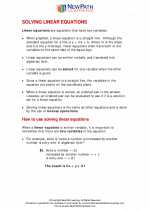 Solving linear equations
Solving linear equations  Worksheet/Answer key
Worksheet/Answer key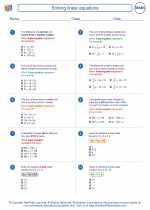 Solving linear equations
Solving linear equations  Worksheet/Answer key
Worksheet/Answer key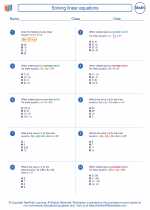 Solving linear equations
Solving linear equations  Worksheet/Answer key
Worksheet/Answer key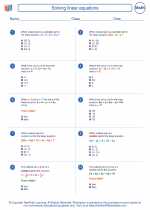 Solving linear equations
Solving linear equations  Worksheet/Answer key
Worksheet/Answer key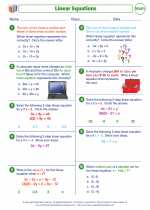 Solving linear equations
Solving linear equations  Worksheet/Answer key
Worksheet/Answer key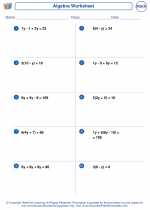 Solving linear equations
Solving linear equations 

 Worksheet/Answer key
Worksheet/Answer key
 Worksheet/Answer key
Worksheet/Answer key
 Worksheet/Answer key
Worksheet/Answer key
 Worksheet/Answer key
Worksheet/Answer key
 Worksheet/Answer key
Worksheet/Answer key

The resources above cover the following skills:
Algebra (NCTM)
Represent and analyze mathematical situations and structures using algebraic symbols.
Use symbolic algebra to represent situations and to solve problems, especially those that involve linear relationships.